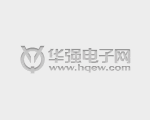Overview:
Compared to the flyback DC/DC converter topology, the quasi-resonant design not only provides high energy efficiency, but also generates low electromagnetic interference (EMI), making it ideal for noise-sensitive applications such as televisions or audio equipment. However, implementation has become more massive and fears for engineers, which often delays engineers from exploring these benefits. In this article, Piotr Pupar, Technical Manager at Future Electronics (Poland), explains how to easily design a quasi-resonant converter that is almost as easy as a popular flyback converter.
Quasi-Resonant Converter Overview The purpose of implementing a resonant circuit in a power converter is to improve the commutation process of the semiconductor switch. In fact, with the addition of a resonant circuit, you can perform zero-voltage and zero-current switching, and overall system efficiency is improved compared to traditional SMPS topologies such as basic hard-switched flyback converters. A typical quasi-resonant converter is capable of achieving efficiencies of approximately 83%-87%. In addition, the resonant converter produces less EMI than the hard-switching converter produces.
Another important benefit is that it is inherently safe in the event of a short circuit. This is because the conduction period of the MOSFET is suppressed before the magnetic properties of the transformer are completely removed, which means that transformer saturation is unlikely to occur. At the same time, because quasi-resonant converters generate power in the same manner as conventional converters, designers who have previously implemented conventional flyback converters are fully capable of implementing quasi-resonant converters. Little need for any additional knowledge.
However, it should be noted that quasi-resonant techniques also have some drawbacks. For systems operating in discontinuous conduction mode, in general, the current through the inductor drops to zero at the end of the commutation period, and the peak current and RMS values ​​are relatively high. This results in higher conduction losses in the MOSFET and greater high frequency losses in the transformer. Therefore, for a wide range of power applications, the best results for quasi-resonant circuits are available at power levels below 150W; for European supply voltage ranges, the best results are obtained at power levels below 200W.
Another less desirable feature of quasi-resonant converters is that the switching frequency rises as the load drops. In extreme cases, this phenomenon may eliminate the advantages of soft switching because the power loss in the MOSFET is greatly increased at high switching frequencies. This requires the PWM controller to implement a frequency clamp to prevent the frequency from exceeding the defined maximum level.
Finally, quasi-resonant converters typically require a MOSFET with a drain-to-source voltage (VDS) of 800V, which is higher than the voltage of a standard flyback controller operating under the same conditions, for a standard flyback controller. Usually 600V is enough. Such 800V devices are generally more expensive than 600V equivalents and are often not integrated into the same package as a controller.

(Please read the PDF for details)
Lithium Carbon Fluorine Soft Pack Battery
The lithium fluorocarbon soft pack battery independently developed and produced by DADNCELL has the advantages of good safety performance, light weight, large capacity, low internal resistance and flexible design (cell model can be customized). DADNCELL Lithium Fluorocarbon soft pack battery is suitable for power supply requirements: strong high and low temperature performance, high energy density (2400Wh/KG) and high discharge platform application fields, such as aerospace, unmanned vehicles, unmanned equipment, field operations , Handheld radios, various electronic product backup power supplies, and other electronic power products. Compared with the DADNCELL cylindrical battery, it has larger capacity and lighter weight, and its working temperature can also reach -40 ~ +125℃. It is plastic, suitable for customers with special needs, and can be customized.
Shandong Huachuang Times Optoelectronics Technology Co., Ltd. , https://www.dadncell.com
